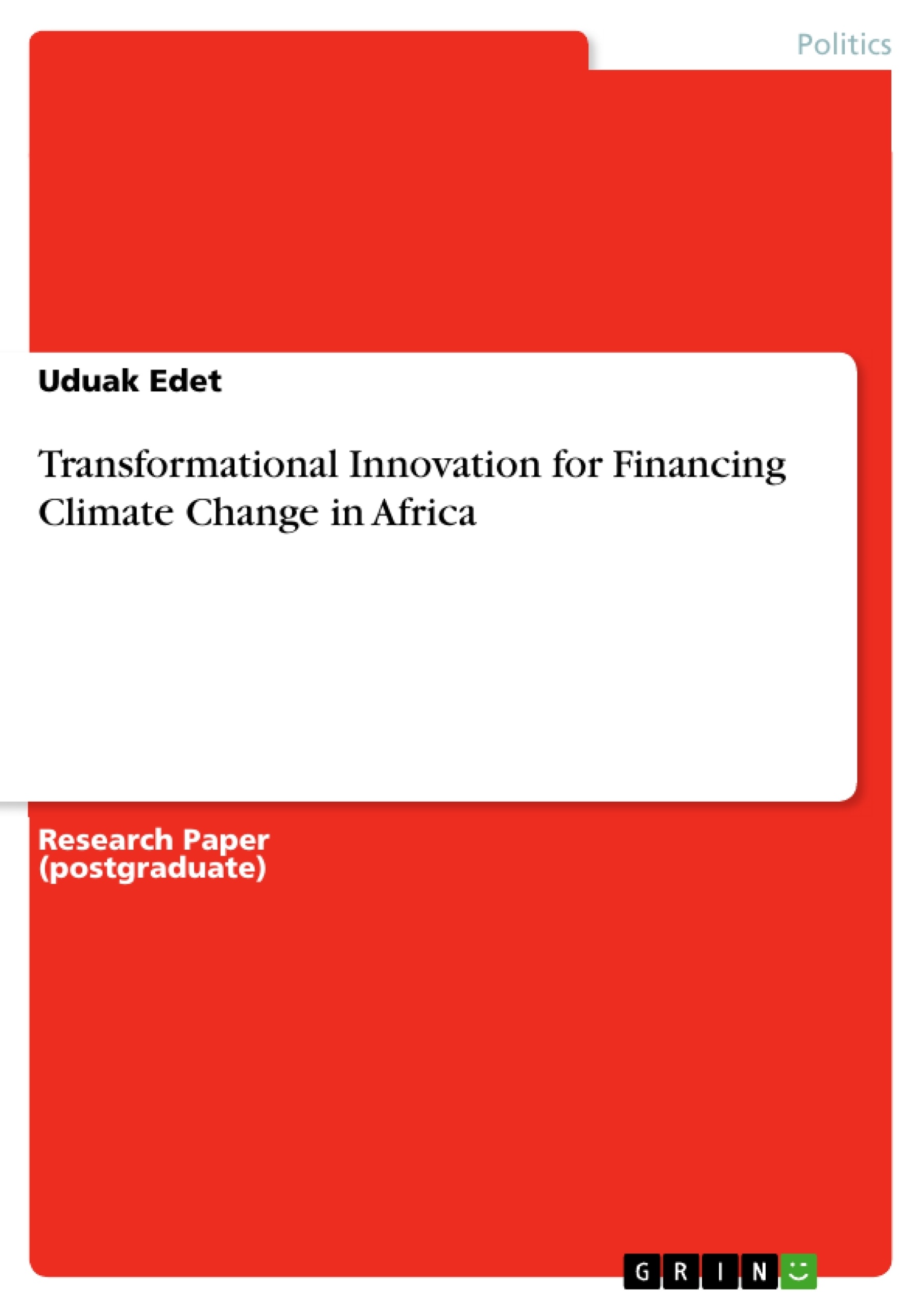This study will focus on the existing funding mechanisms for climate finance, with an emphasis on the Green Climate Fund (GCF). It then explores other innovative strategies for generating climate finance within Africa and the importance of complementary finance is identified as the basis for a major transformational innovation. Many of world’s most exposed countries to climate change are in Africa, so the focus is on Nigeria. This is because the country’s international obligations towards climate change and its mechanisms for compliance are interestingly complicated.
Significant financial resources are required to drive the reduction of greenhouse emissions and adaptation to the adverse effects of climate change. Mobilized from public, private or alternative sources, Climate finance can be defined as the local, national or transnational funding set up to address climate change. However, the solution may not be in the finance, but in the innovation so this notion has laid the groundwork for this paper.
Table of Contents
Introduction
Overview
Theoretical Perspectives
The Paris Agreement and its Broken Promises
Funding Sources and Mechnanisms for Climate Finance
Africa’s Dilemma
Prioritizing Climate Change
Climate Change Framing
Transformational Innovation & Recommendations
Limitations
Conclusion
References
- Quote paper
- Uduak Edet (Author), 2022, Transformational Innovation for Financing Climate Change in Africa, Munich, GRIN Verlag, https://www.grin.com/document/1256592
-

-

-

-
Upload your own papers! Earn money and win an iPhone X. -

-
Upload your own papers! Earn money and win an iPhone X. -

-
Upload your own papers! Earn money and win an iPhone X. -

-
Upload your own papers! Earn money and win an iPhone X. -

-
Upload your own papers! Earn money and win an iPhone X. -

-
Upload your own papers! Earn money and win an iPhone X. -

-
Upload your own papers! Earn money and win an iPhone X. -

-
Upload your own papers! Earn money and win an iPhone X. -

-
Upload your own papers! Earn money and win an iPhone X.

